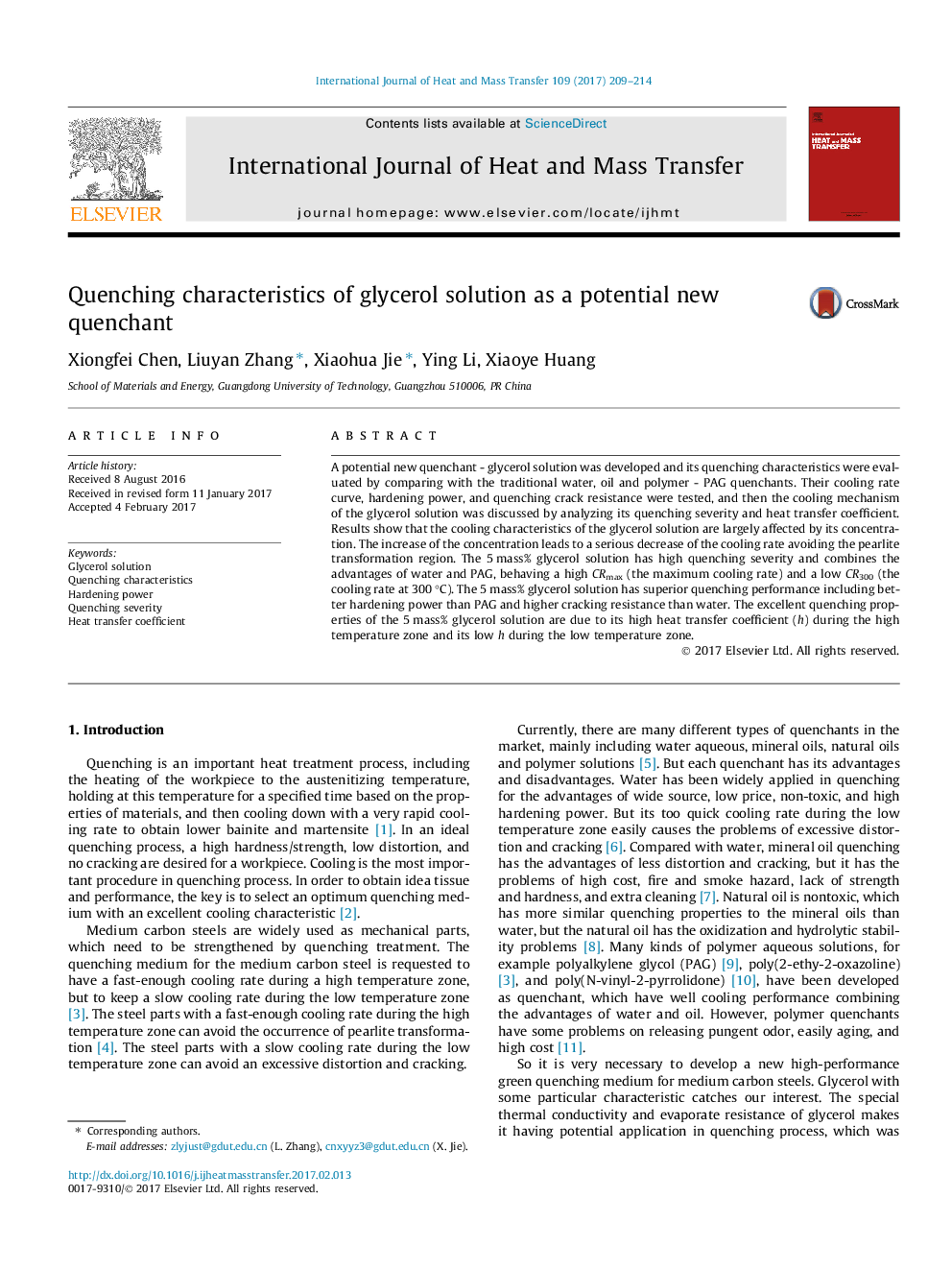| Article ID | Journal | Published Year | Pages | File Type |
|---|---|---|---|---|
| 4994479 | International Journal of Heat and Mass Transfer | 2017 | 6 Pages |
Abstract
A potential new quenchant - glycerol solution was developed and its quenching characteristics were evaluated by comparing with the traditional water, oil and polymer - PAG quenchants. Their cooling rate curve, hardening power, and quenching crack resistance were tested, and then the cooling mechanism of the glycerol solution was discussed by analyzing its quenching severity and heat transfer coefficient. Results show that the cooling characteristics of the glycerol solution are largely affected by its concentration. The increase of the concentration leads to a serious decrease of the cooling rate avoiding the pearlite transformation region. The 5 mass% glycerol solution has high quenching severity and combines the advantages of water and PAG, behaving a high CRmax (the maximum cooling rate) and a low CR300 (the cooling rate at 300 °C). The 5 mass% glycerol solution has superior quenching performance including better hardening power than PAG and higher cracking resistance than water. The excellent quenching properties of the 5 mass% glycerol solution are due to its high heat transfer coefficient (h) during the high temperature zone and its low h during the low temperature zone.
Keywords
Related Topics
Physical Sciences and Engineering
Chemical Engineering
Fluid Flow and Transfer Processes
Authors
Xiongfei Chen, Liuyan Zhang, Xiaohua Jie, Ying Li, Xiaoye Huang,
